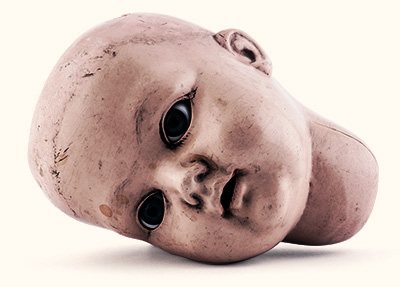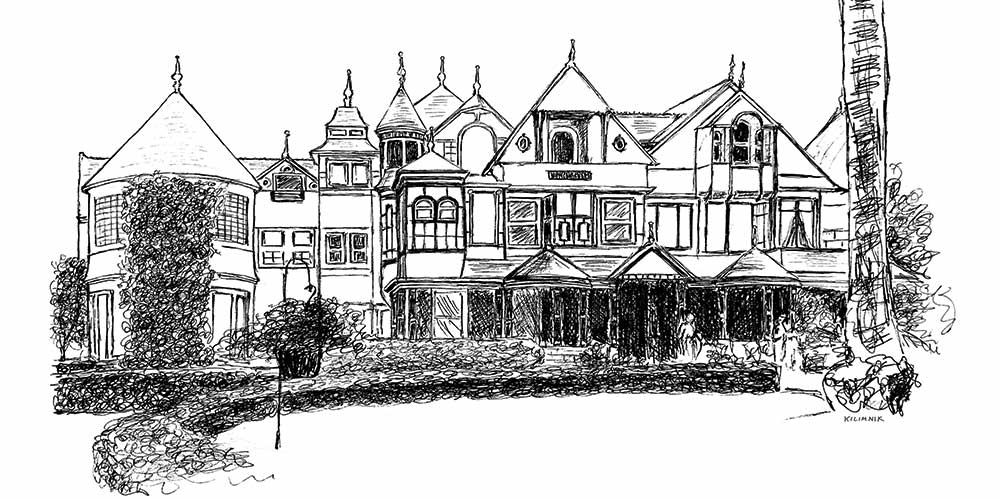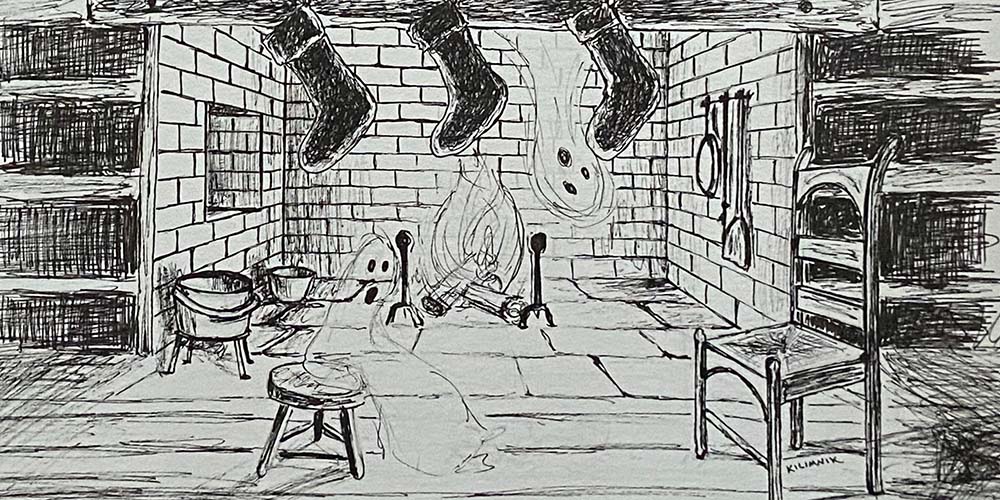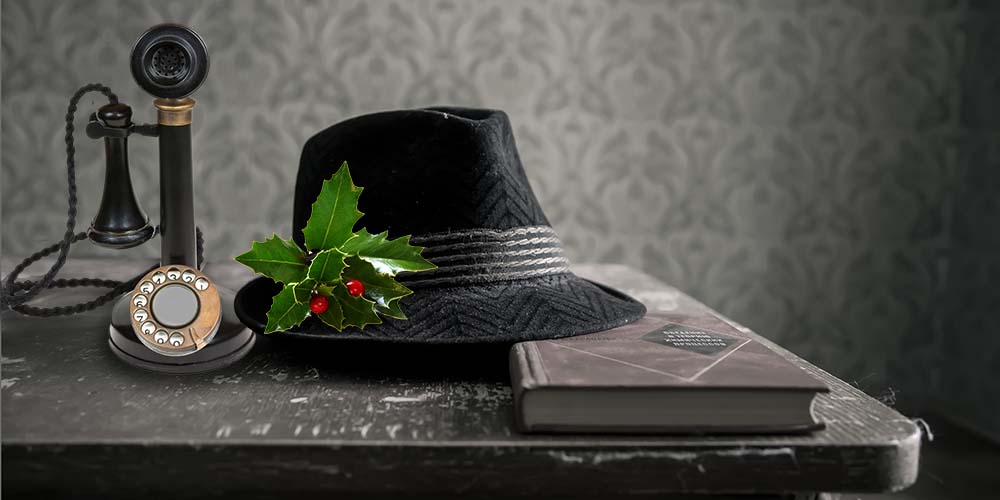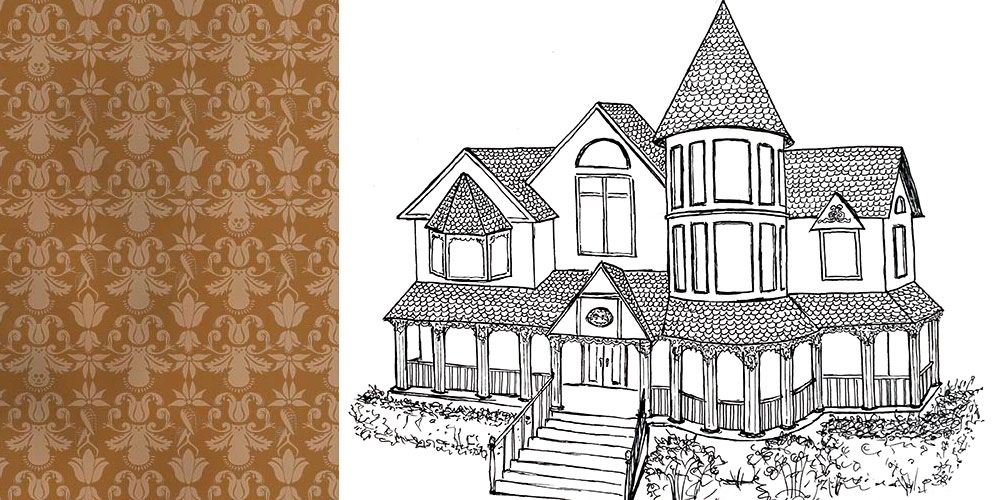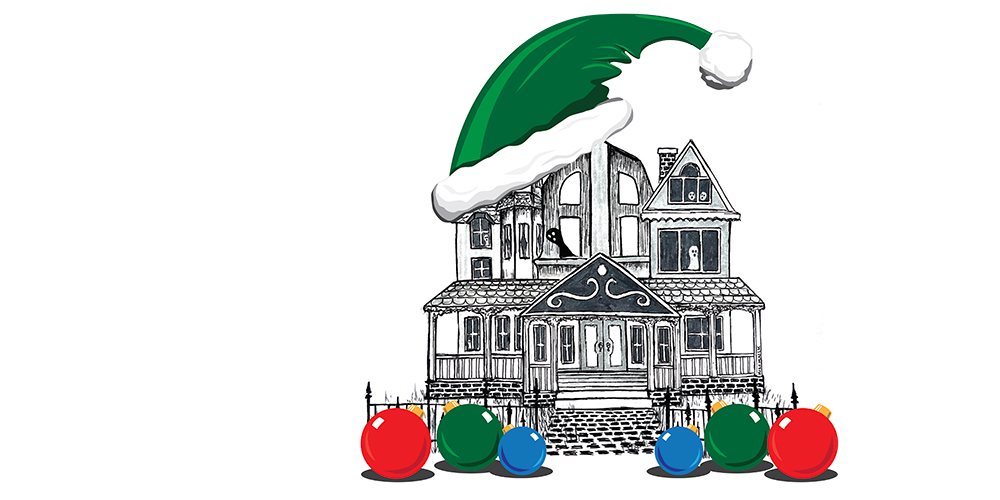The Victorians certainly didn’t invent the tradition of telling ghost stories at Christmas. That had been going on for centuries upon centuries because, let’s be real, people like to scare the hell out of each other. They were far from the first to connect paranormal activity to the Christmas season. In fact, Puritans in America and England had banned Christmas for a while in the 1600s, and Christmas trees and decorations were seen as pagan rituals. Businesses stayed open on December 25. In some places, schools stayed in session on Christmas Day up until the 1870s. In both England and the United States, nobody really bought into the Christmas celebrations for a couple of centuries.
During Victoria’s reign in the 1800’s, though, Christmas became the celebration that we know today. But what made the Victorians so good at the Christmas ghost stories and haunted tales? And how did these ghost stories become such an important part of holiday gatherings?
Multiple reasons for Victorian Christmas ghost stories
As with most explanations, it turns out that there isn’t just one. Christmas celebrations took off the way they did partly for economic reasons. Due to the Industrial Revolution, many rural residents migrated into the cities for work. Many people found themselves in unfamiliar surroundings, and they craved the old stories that reminded them of home.
Also, a brand new middle class came about from the transition, and they had servants who were routinely using secret passageways and avoiding detection throughout the house as they worked. They were using gas lamps that produced carbon monoxide and caused hallucinations. It was a perfect setting for some brilliant and pretty trippy stories.
All of that said, it was more than just a massive shift in the population of the cities, a resurgence of the holiday, and environmental factors that lead to the birth of this unique genre of literature. It always comes down to giving the people what they want right? Throughout history, storytelling—particularly ghost stories—has been an oral tradition. For as long as there have been humans, we have been telling each other stories, passing them down through generations and creating lore.
The prevalence of the periodical press, though, gave a new outlet to these stories. Ruth Robbins, professor of English literature at Leeds Metropolitan University says that “publishers suddenly needed a mass of content, and ghost stories fitted the bill – short, cheap, generic, repetitive, able to be cut quite easily to length.”
Christmas is back in fashion. People are creating and consuming creepy stories, especially around the Christmas season when the nights are long and dark and everyone is trapped inside. There is a press that is eager for content, and they’re ready to give people what they want: Christmas ghost stories. And with that, we have the birth of a genre and resurgence of a spine-chilling tradition.
Some Christmas Ghost Stories we recommend:
Here are some of the best creepy ghost stories we could find, and they’re definitely worth the read:
The Kit-Bag
by Algernon Blackwood
A young man works for a prominent lawyer who is in court defending a murderer. Ready for a break, he is looking forward to Christmas. When he asks his employer to borrow a kit-bag for his travels, things go very, very wrong.
A Strange Christmas Game
by J.H. Riddell
A Strange Christmas Game
Don’t feel like reading? We get it. Here’s another scary story, conveniently narrated for your listening pleasure. This one involves siblings who stay in a newly-inherited haunted house. A beautiful and authentic tale of spirit-infested dwellings.
The Open Door
by Mrs. Margaret Oliphant
When the narrator’s young son starts ranting about an intolerable that recurs outside their Victorian mansion at night, people begin to think he’s losing his mind. Everyone except his father, that is.
Top Image: Winslow Homer. Christmas—Gathering Evergreens and The Christmas-Tree. 1858. Wood engraving on paper, published by published by Harper’s Weekly. The Art Institute of Chicago.

